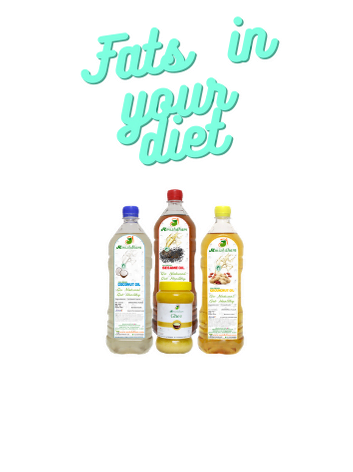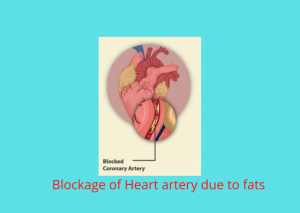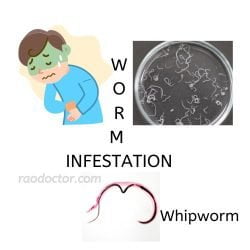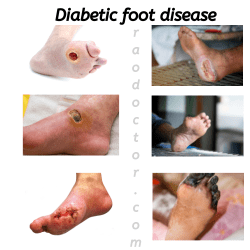Table of Contents
Introduction to Dietary Fats-
How Having Healthy Fats Helps Your Heart and Improve Quality of Life
After writing articles on Carbohydrates and Proteins we now discuss Dietary fats, which is nothing but the Fats we use in our Diet.
Hi, this is Dr. K.P.V.Rao, your mentor and guide in the world of Healthcare.
In this article, you are going to learn today all the facts about the Fats we put in our food to make it palatable and tasty.
Did you know-
that there are-
- Good fats- the saturated ones like the MUFA and PUFA[discussed in detail below].
- Saturated fats- the not so good fat.
- And the Trans fat- the most unhealthy and the dangerous of the lot.
This article will give you good insight regarding these fats and help you choose the best suited for you and your family.
How do fats shape our health?
Consuming healthy fats can be good for your heart. In some cases even help reverse the levels of your cholesterol reports from bad to good.
Staying healthy and fit is all about eating healthy food. Out of all the macro items in our diet, eating of fats, its quantity, and quality matter most.
As a part of patients seeking advice on their heart health, I consider counseling on different food items as quite important. So, I take pleasure in talking on their diet and suggest some modifications. Like, for eg., the oils they use for cooking, their benefits or pitfalls, etc., etc.
One has to decide which type of fats to have as we reach adulthood so as not to cause Obesity, Heart disease, or Diabetes. The purpose of writing this article is to guide you to eat healthy fats. That will help you live a healthy and fit life as you reach old age.
Why am I writing this article on fats?
In my day-to-day practice, I come across different types of chronic patients. These patients usually have diet-related problems such as consuming unhealthy types of fats. They do not know that these fats they consume like for eg. in fried food in oils that are used over and over again are very harmful.
Repeated heating of the same oil makes them highly oxidized. These oxidized oils used in food items like samosa, potato chips, potato vada raise our bad cholesterol. This can lead to the formation of plaques[blocks] in our heart arteries.
So I decided to share my knowledge of these Dietary fats with you so that you can have a healthy heart and a better quality of life.
What’s next?
Even though this article is quite vast and lengthy, I request you read it till the end. I will be adding some interesting podcasts in between for you to listen to if reading appears overwhelming to you.
Now let’s jump on to the main topic-
What are Dietary Fats and what do they do?
Fats belong to a group of chemicals called lipids. They are present in our food in the form of vegetable oils, animal foods like milk, butter, ghee, and in foods like egg, meat, etc.
Whereas carbohydrates give us energy, proteins build our body, fats in our diet bind structures in our body. They do it with the help of a tissue called Adipose tissue.
How Are Dietary Fats Useful to our Body?
This illustration shown below shows how dietary fats play a role in our health-

The implication of excess fats-
Excessive fats in our diet can cause health problems. It can cause obesity[accumulation of fats in the abdomen], surround organs [Visceral fats], builds plaques in the arteries of our heart, etc., etc.
Very often patients coming to my Clinic enquire about fat-related issues. These patients mostly have-
- Hypertension
- Diabetes
- Obesity
- Hypothyroidism
What’s the relation of Dietary Fats we eat and our health?
Most of these patients have a direct relation to the fats they use in their diet. They are worried whether they are eating the right type of fats.
Depending on what type of fats they are consuming, changes are observed in-
- Body structure like Central Obesity;
- Lipid profile aberrations like High/Low Total cholesterol, High Triglycerides, etc. Let me explain this with an example. Just have a look at the picture of a typical lipid profile test shown below-
The picture shown below is that of my lipid profile values as of 24/4/2016.
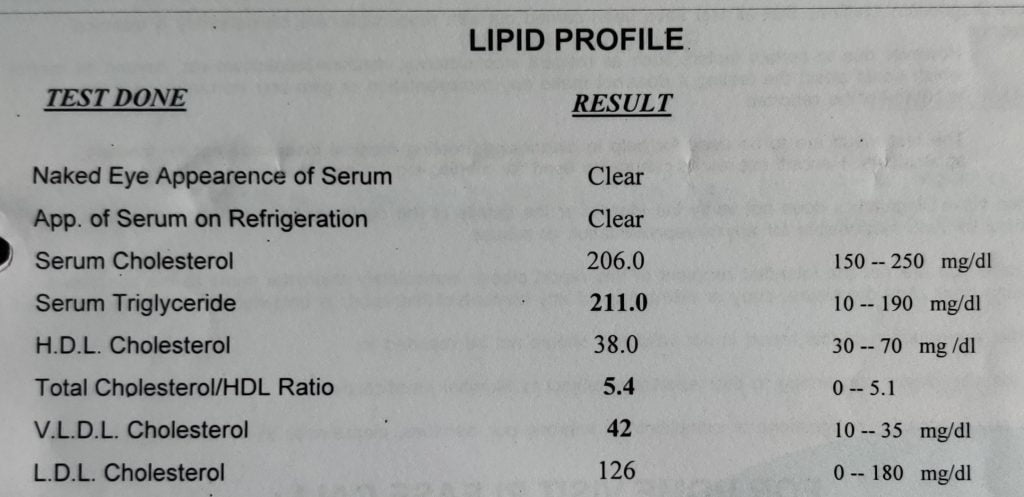
This is my latest[shown below] lipid profile report as of June 2019. It clearly shows how the values of my different cholesterol have changed over a period of 3 years[2016 to 2019]

These changes in the lipid profile values have been achieved without using any cholesterol-lowering drugs like statins. A mere change of cooking oil and regular brisk walks have brought about these changes. I simply switched to a combination of Rice Bran Oil and Sesame oil.

- Affects Heart functions- High B.P., blocked arteries due to cholesterol, etc.;

- This leads to High Triglyceride levels due to the consumption of some fats that can lead to Diabetes and vice versa.
My Source-
A lot of research goes into each of the articles I bring to you. I came across a very good book on Heart Disease we Indians are exposed to[See Below].
Dr. Enas A. Enas in his book ‘HOW TO BEAT THE HEART DISEASE EPIDEMIC AMONG SOUTH ASIANS ‘ mentions that ” Consumption of excess fat[above 65 grams a day] has been shown to double the risk of heart attack and stroke “.
{ I have a copy of this book in my personal library. I refer to it frequently; it has helped me to guide hundreds of my patients who have a faulty diet. This has helped me avert life-threatening conditions in such patients}.
According to him, we need 30-35% of fats of the total calorie requirement in our diet. So if your calorie requirements are 2200 calories( Read here), the calories purely from fats would be around 660 calories. One gram of fats provides 9 calories. So in this case, it translates to around 73.33 gm of fats, which is very high.
Listen to this podcast for a while-
Before we proceed ahead, you can listen to this very interesting podcast by Kris Sollid, RD, senior director of nutrition communications at the IFIC Foundation, has to say on dietary fats-https://soundcloud.com/foodinsight/kris-sollid-fats-podcast-final]
How do we manage this high intake of fats?
So, how do we control this high intake of fats? Let us first try to understand the different types of fats we consume. We can then figure out ways to use them as per their benefits they add to our overall health.
This brings up one question-What are the different types of fats in our food?
Types of Dietary Fats-
Based on the importance of the fats, I have classified the fats on whether they are beneficial, partially beneficial, or totally bad type. Hence, I have named them[as in the English film-the Good, the Bad, and the Ugly]–
- The Good Fats
- Bad Fats and
- The Ugly Fats.
I have made a simple table for you to know and understand these different varieties of dietary fats. This should help you make an informed decision while using them in your food or diet.
Table
1. The Good Fats-
Let us now begin with the Good variety of fats in our diet. These are”Good” in the sense that they help to maintain the health of our hearts. These are the fats that have a great impact on our Cholesterol levels. As you all know, a bad cholesterol report is a sign of having plaques or blocks in our coronary[heart] arteries.
Good fats are the Monounsaturated[MUFA] and Polyunsaturated fats[PUFA]. These fats contain what we call the healthy or essential Fatty Acids. There are different types of fatty acids with varied health benefits. Let us discuss them one by one.
What are these Fatty Acids and how do they help us?
By reading the above question, you must be wondering-are we consuming some form of acids? Well, to answer that question -no, not at all.
Let us go back to the table shown above and analyze it step by step-
The Essential Fatty Acids
Well, fatty acids are those components of the fats that are essential in maintaining our organs like the heart, brain, and kidneys.
Surprisingly, most of these essential fatty acids are not produced by our bodies. They have to be out-sourced from different types of food items.
Very often you may have heard people talking about Omega 3 or Omega 6 or Omega 9 supplements they are taking. They have probably been prescribed these supplements either-
- As a part of treatment to reduce cholesterol levels[eg. in heart disease]
- For treating arthritic conditions
- Hair growth problems
- Skin diseases.
These fatty acids serve as components of various functions of fats in the body.
Types of Essential fatty Acids-
These Fatty acids are present in the Good type of fats, namely Polyunsaturated and Monounsaturated, as shown in the table above. They are essential in the sense that they help in bringing about changes in different aspects of our body.
Let us discuss their features and benefits one by one-
Omega 9 Fatty Acid-
These fatty acids are a part of Monounsaturated fats.
These are the healthiest of the lot. They help in-
- lowering your LDL[bad cholesterol]
- increasing your HDL cholesterol.
- Omega 9 fatty acids also reduce Serum Triglycerides[TGL].
This can be a great help to we Indians as TGL is high in most of us.[ To learn more about cholesterols-Read here]. Nuts, Olive oil, Canola oil, etc., are the source of these very important monounsaturated fats.
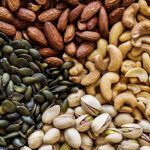
The more you have foods containing Omega-9 fatty acids the better. The recommended daily requirement is 20% of our total calories and is roughly 24 gm in a person whose needs are 2000 cals/day. So, having a handful of nuts a day can keep your heart problems away! [Click here to know more]
Omega-6 Fatty Acid-
The omega-6 fatty acid is present in Polyunsaturated fats. They are present in most of the cooking oils we use and nuts. [Click here to know the nutrient value of different cooking oils]
![Dietary Fats- The Good, The Bad, And the Ugly 9 Sesame oil-a source of polyunsaturated[pufa] fats](https://raodoctor.com/wp-content/uploads/2020/07/sesame-oil-1-300x300.jpg)
You must observe that in the Nutritional Value of the oil, as shown above, you will notice that it contains both MUFA and PUFA. The MUFA is more than PUFA, indicating that this oil is very good for our heart health.
The recommended daily requirement is 10% of your total daily calories. The properties of this fatty acid are-
- helps to lower LDL cholesterol
- But also decrease HDL at the same time
They are moderately healthy.
Omega -3 Fatty Acid–
This is another very healthy fatty acid that I recommend to my patients regularly. They are also present in Polyunsaturated fats.
Omega-3 fatty acids are present in vegetable oils [eg. Canola oil] and nuts. They help lower LDL and increase HDL.
Omega-3 fatty acids are of 2 sub-types, namely–
DHA[docosahexaenoic acid] and EPA[eicosapentaenoic acid]-the names are a bit overwhelming. Never mind,we’ll remember them as DHA and EPA. Both are present in fish oils, particularly in fishes lake trouts[1.6 gm], salmon[1.4 gm], sardines[3.3 gm], and mackerel[2.5 gm], where the total weight of fish is 100 gm. Consuming these fishes in a curry form[ & not fried] 2-3times a week will provide you with plenty amount of DHA and EPA. Alternately, you can purchase Fish oil capsules – you can purchase it here– and have it 2 times daily.
ALA[alpha linoleic acid] is a plant-based Omega-3 fatty acid. It is present in vegetable oils like flaxseed and canola oil[shown above].
Where can we get these Omega 3 Fatty acids?
Omega-3 fatty acids have the ability to lower your triglycerides as well as LDL. Lowering triglycerides is especially helpful for patients having a risk of developing diabetes.
Some oils that are rich in ALA Omega 3 fats are-
- Flaxseed oil[50%]
- Canola oil [10%]
- Soya bean oil[7%]
Other sources are –
- Nuts[Almonds, Walnuts, Peanuts]
- Tofu, soya beans, pinto beans, flax seeds.
Here I have covered almost everything you want to know about the GOOD FATS. Now we move on to the next in line- the BAD FATS.
2. The Bad Fats-
Coming to the table on fats, the second one in line is the Bad fat. They are also known as Saturated fats. Let’s start with an example here. Look at this picture shown below-
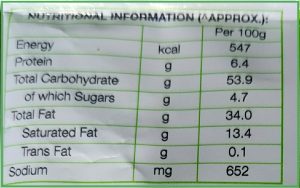
This the back page information on the packet of potato chips of a reputed company. Note the total absence of the Good Fats and a whopping 34% total bad fats in a 35 gm packet, i.e., about 11.9 gm.
Imagine you are eating about 100 gm of this chips every day. The total amount of fats consumed will be 34 gm, way above the recommended value of 6% or 6 gm. This is known to increase the risk of having a heart attack by 10 folds.
Now that you know the risk, I would like to point out that we Indians are even more prone to heart disease, Why? you may ask.
Because we consume lots of these fats. They are present in-
- Butter[eg. Amul, Britannia]
- Ghee[ eg. Amul, Patanjali]
- Coconut oil[eg. Parachute]
- Palm oil[ the above-shown chips have been fried in this oil] such as Palmoline.
Now that you know the consequences, I recommend that these Bad Fats should be consumed in moderation. Just once in a way, that too say, 35 gm of potato chips. I believe that we should sometimes pamper our taste buds!
Now lets on to the next in line- The Ugly Fats.
3.The Ugly Fats-
This is the most dangerous of the lot. They are also called Trans Fats. These are vegetable oils in solid forms, popularly called hydrogenated or partially hydrogenated oils. Here the oils are subjected to a chemical process called hydrogenation which has the ability to –
- Increase the shelf life of these fats.
- Make the cooked items tastier.
- it is cheaper and is used in making tasty bakery products like biscuits, cookies, cakes, etc.
Another form of trans fat is the oil which has been used for frying items such as samosa. bhajia, potato vada, etc. In this instance, the vendors overuse these oils. As mentioned earlier, these fats undergo a process called oxidation.
All these items shown can also be bought online by ordering on this link.
Some countries like Japan and Finland do not use these Trans fats. Hence the rate of heart disease in these countries is very low.
In our country, it is the opposite. Compared to Good Fats like olive oil, canola oil, avocado oil, these Trans Fats oils are very cheap. And the economic condition of our overpopulated country forces us to use these trans-fat oils. Hence the number of heart disease cases is high in our country.
Conclusion-
The topic of Dietary fats and their use is very exhaustive. However, I have done my best to help you to choose the right type of fats. Here is a link that might help you choose the right type of food for a healthy life- link
Hope you have enjoyed reading this article. If you have any doubts or queries, do leave a comment in the comments section. I will be glad to help you out.
Finally, as I come to the end of this article, I would like you to listen to this podcast by Marni and Jesse-
Sources:-
- https://vikaspedia.in/health/nutrition/dietary-guidelines-1/moderate-use-of-edible-oils-and-animal-foods
- https://inbodyusa.com/blogs/inbodyblog/90571521-fat-doesnt-make-you-fat/
- https://health.gov/our-work/food-nutrition/2015-2020-dietary-guidelines/guidelines/chapter-2/a-closer-look-at-current-intakes-and-recommended-shifts/#figure-2-7
- For those who want Hindi translation – Click here
The topic for my next blog is an equally important one- Complications of Diabetes. This will be particularly helpful to those suffering from Diabetes.
If you have a Twitter account, kindly click on the Quote below so that this article reaches all your friends and followers.
Our Health depends on What we give to our Body-be it food, exercise, or proper rest. So Eat Right, Exercise daily, Sleep well and Stay Healthy, Fit And Fine! Share on X
